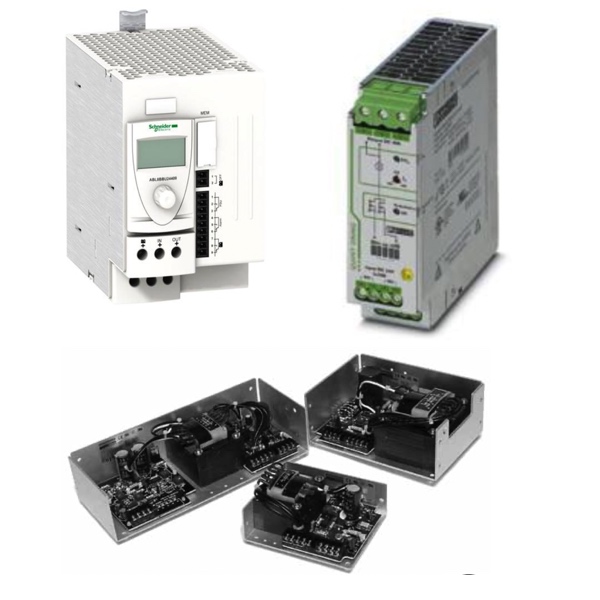Power Supply Accessories

Accessories for power supplies are important if you want to improve power supply systems' functional, installation, and maintenance aspects. A proper set of power supply accessories ensures a better quality of installations and increased convenience. The kind of accessories that we commonly use in industrial and commercial power supply installations is mounting hardware, particularly DIN rail mounting as well as brackets and adapters. These power supply accessories make the installation and maintenance of the power supplies a whole lot better and easier.
One more class of power supply accessories to consider involves the key elements of electrical connections—connectors and terminals that make or break those connections. Power supplies must reliably connect to the multitude of kinds of devices they power. Good, strong, and secure connections are essential, and power supply connectors and terminals do an outstanding job of providing them.
It is vital to have proper protection devices like fuses, circuit breakers, and surge protectors. They guard both the power supply and the connected equipment against electrical faults and surges. These events can cause a lot of damage and, at the very least, take the system out of commission for some time.
FAQs
What are different models of power adapter and what are they used for?
Different models of power adapters, such as wall adapters, desktop adapters, and USB adapters, are used to convert AC power from an outlet to the appropriate DC voltage needed to power various electronic devices like laptops, smartphones, and other portable electronics.
How to Select and Size a Power Supply
A power supply alters power from one type to another and ensures that the voltage being delivered is the proper level, with the right characteristics, to enable equipment to function properly.
Power rating
If a power supply is rated for 5 amps at 24 VDC, (where voltage times amperage equals total wattage) the power rating for that power supply is roughly 120 Watts. This rating is very important because if this number is exceeded, it can cause a failure of the power supply and potentially damage other hardware wired downstream or on the load side of the device. To avoid this failure is important that the power supply is sized correctly.
Sizing a power supply
To properly size a power supply, identify what devices will be reliant on the power supply and what their total power consumption will be. The sum of all power to be delivered needs to be less than the total power rating of the power supply. For example, if the devices combined for a total of 100 Watts, then a 5 AMP power supply, which is rated for up to 120 Watts, would be sufficient. However, if the sum of those devices’ total power requirement is greater than that of the power supply rating, then a different power supply should be selected. It is important to allow for a buffer or safety factor. When sizing a power supply, never select a power supply that is rated for the same amount of power as the total power requirement of all of the devices. Oversizing the power supply will allow for changes and additions that may occur in the future.

